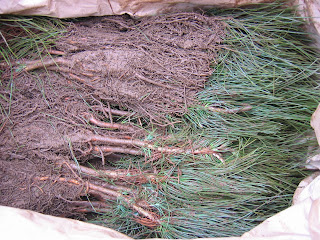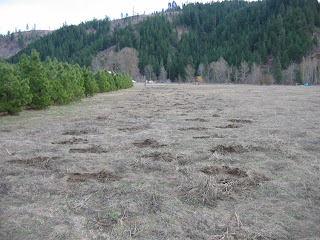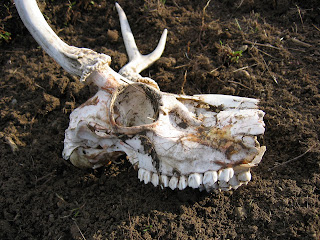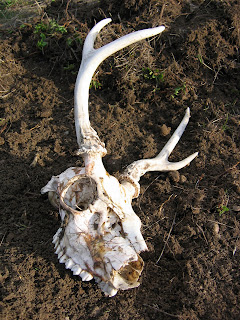A week ago we spent 7 hours over two days preparing part of meadow for our first
tree-planting experiment. Now the trees have arrived, and the next step was to put them into the ground.
The weather was perfect for planting - perfect for the trees, that is. The temperature was in the 50s, but most importantly, it was overcast and drizzling all afternoon. The roots on young tree seedlings can dry out very quickly if exposed to sun, heat or dry air, and this day was lacking in all three.
The seedlings we bought were probably 2 years old. Ordered from a local nursery, our trees were stored in a cold storage trailer in Bingen until we were ready to plant. So Corinne drove in to town, picked up the trees, and we were on our way.
There's no magic to planting trees: make a hole deep enough so that there is enough room for the roots without bending them; place the tree in the hole so that the right amount of the stem is exposed (you can usually see where the original soil line was); then fill the hole back up and move on to the next tree.
We borrowed yet another tool from our friends at Underwood Conservation District: a
hoedad. A cross between a pick axes and a hoe, the hoedad is specifically designed to make deep, narrow holes in which to quickly plant seedlings. Unfortunately, the only hoedad that UCD had to loan us was a bit short for our task, so each hole took 4-5 swings before the hole was suitably sized.
I would make the hole, then Corinne would follow behind me to plant the tree and replace the soil. We didn't get started until ~4pm on Saturday, and we just managed to finish planting all 201 trees before we lost light, at about 7:30pm. It works out to about 1 minute per tree, which I think is pretty good for our first attempt. (Of course, that doesn't include the site preparation time, which actually took longer.)


Summary:
Site preparation:
7 hours Planting:
3.5 hours Total trees planted:
201 Total area planted:
~1/2 acre Total cost:
$86So far, so good: after 24 hours in the ground, we have 100% survival rate. Between gophers, deer, elk and other assorted wildlife, we'll see how long that lasts.
- Mike (& Corinne)

















